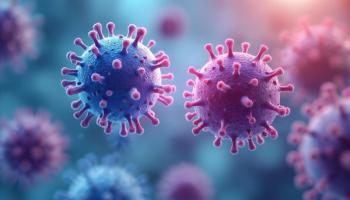
Brazilian Wasps Contain Cancer-Fighting Agent in Venom
Research may lead to new combination therapies that attack different parts of cancer cells.
Research may lead to new combination therapies that attack different parts of cancer cells.
We tend to run away when confronted with a wasp, but patients with cancer may have a reason to get stung on purpose. The wasp Polybia paulista protects itself against predators by producing a venom that contains a powerful cancer-fighting ingredient called MP1, according to research from the Biophysical Journal.
The MP1 ingredient works to selectively kill cancer cells while leaving normal cells untouched, a feat many scientists have worked hard to understand and replicate. MP1 interacts with lipids that are abnormally distributed on the surface of cancer cells, creating gaping holes that allow molecules crucial for cell function to leak out.
“Cancer therapies that attack the lipid composition of the cell membrane would be an entirely new class of anticancer drugs,” said co-senior study author Paul Beales, of the University of Leeds in the UK. “This could be useful in developing new combination therapies, where multiple drugs are used simultaneously to treat a cancer by attacking different parts of the cancer cells at the same time.”
Scientists know that MP1 acts against microbial pathogens by disrupting the bacterial cell membrane, but exactly how the ingredient distinguishes the difference between cancerous cells and normal ones remained unclear to researchers until now.
Beales and co-senior study author João Ruggiero Neto of São Paulo State University in Brazil suspected that the reason might have something to do with the unique properties of cancer cell membranes. In normal cells, the inner membrane leaflet facing the inside of the cell contains phospholipids called phosphatidylserine (PS) and phosphatidylethanolamine (PE). However, in cancer cells, PS and PE are located in the outer membrane leaflet facing the cell’s surroundings.
Beales and Neto tested their theory by creating model membranes and exposing them to MP1. Cells that contained PS were associated with increased binding of MP1 to the membrane by a factor of 7 to 8. The presence of PE however enhanced MP1’s ability to quickly disrupt the membrance, increasing the size of holes by a factor of 20 to 30.
“Formed in only seconds, these large pores are big enough to allow critical molecules such as RNA and proteins to easily escape cells,” Neto said. “The dramatic enhancement of the permeabilization induced by the peptide in the presence of PE and the dimensions of the pores in these membranes was surprising.”
Future studies aim to further evaluate the function of MP1 by altering the amino acid sequence to see how the structure relates to its function and further improve the peptide’s selectivity and potency for clinical purposes.
“Understanding the mechanism of action of this peptide will help in translational studies to further assess the potential for this peptide to be used in medicine,” Beales said. “As it has been shown to be selective to cancer cells and non-toxic to normal cells in the lab, this peptide has the potential to be safe, but further work would be required to prove that.”
Newsletter
Stay informed on drug updates, treatment guidelines, and pharmacy practice trends—subscribe to Pharmacy Times for weekly clinical insights.


















































































































































































































